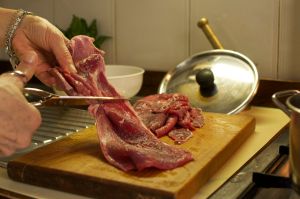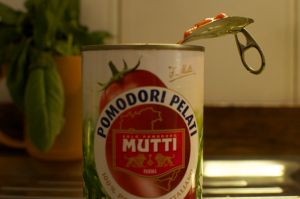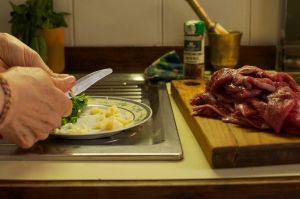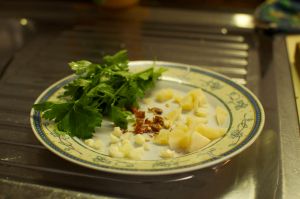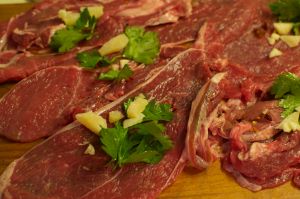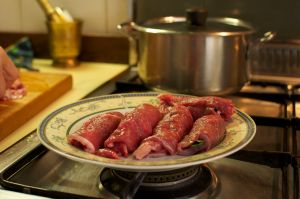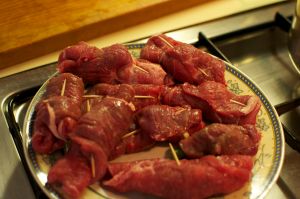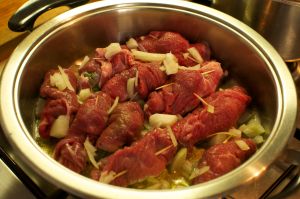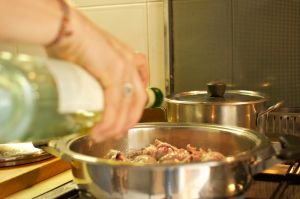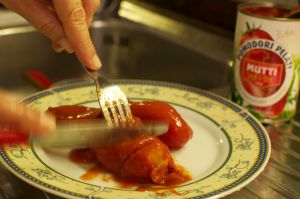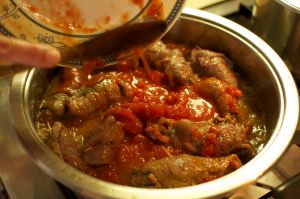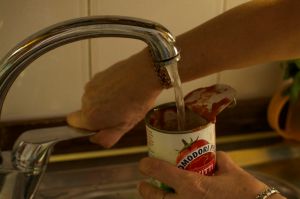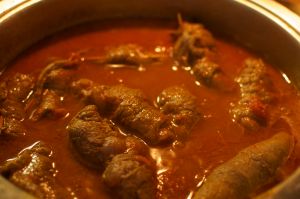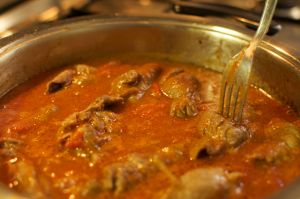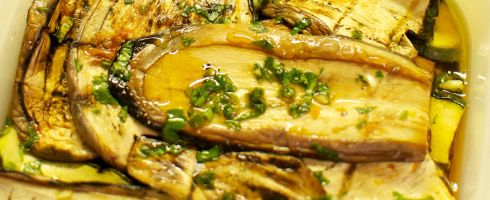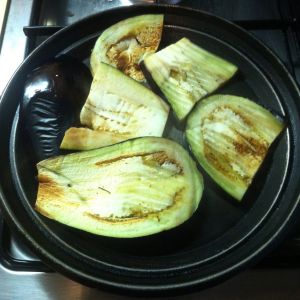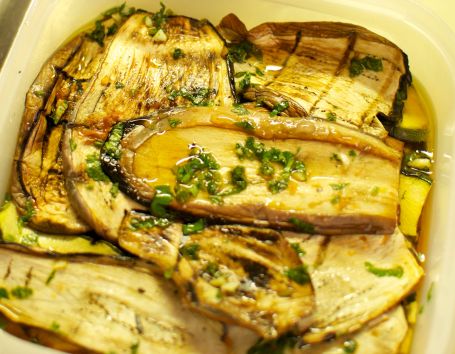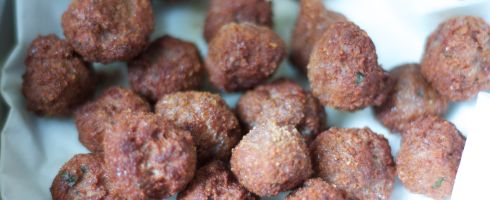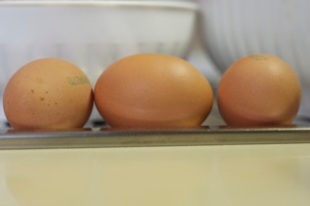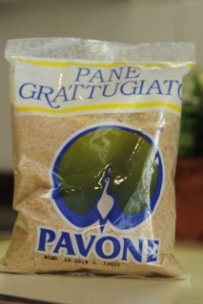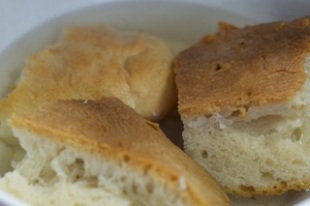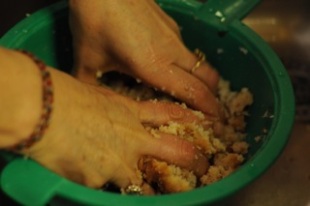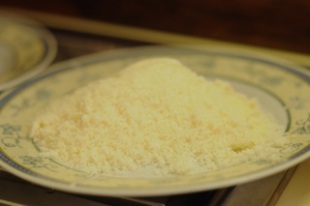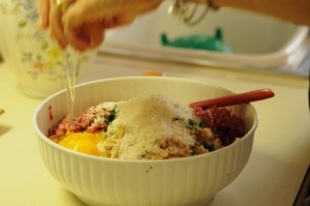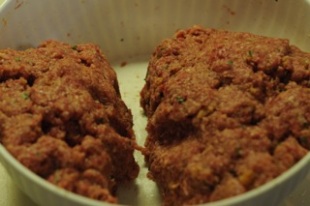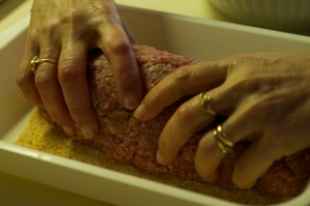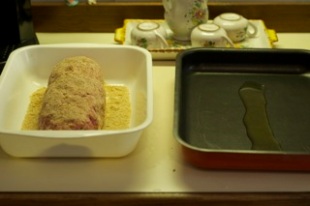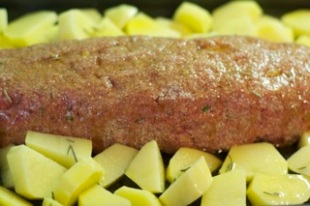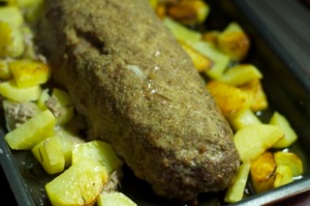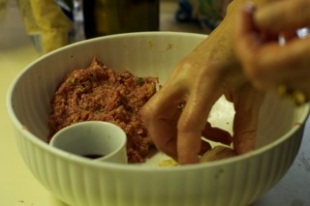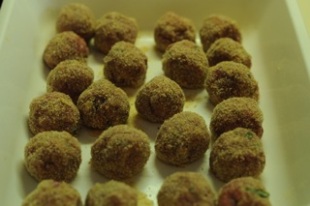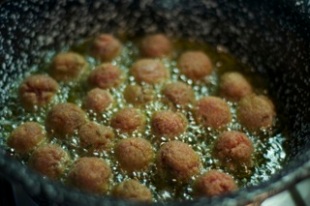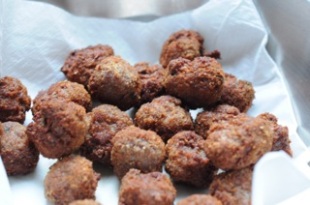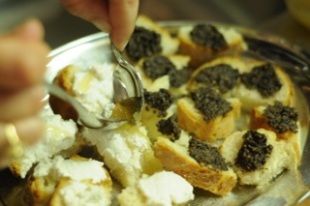Mamma Angela cooks an excellent fish dish and she knows perfectly well how to prepare a vegetable. But this post is, yet again, about meat.
Maybe i’m being tested. In the spirit of honesty I have to admit that, once this dish was cooked – I didn’t eat it. But the rest of the family did and they looked pretty damn happy doing so. So I’m going to post about ‘Brascioli’ anyway.
In case you didn’t know, Mamma Angela is from Puglia – a little town not far from the coast in the heel of the Italian peninsula called Torre Santa Susanna. Some visual orientation for you:
Puglia is an amazing place. More on that in another post. Torre Santa Susanna is the quintessential small town and mealtime is important. Mamma Angela learned how to cook there, so one of the major focuses of this blog will be traditional recipes from Puglia. ‘Brascioli’ [pronounced Brah-SHOW-lee] or ‘Involtini di Manzo al Sugo’ / ‘Beef Rolls in Tomato Sauce’ is one such special recipe.
You are going to need:
1 – Thinly sliced beef – this should look like strips of really thin steak. Here they call it ‘Fettine di Manzo’. Go for low-fat, high quality – really red and really thin. Should look like this:
2 – A small onion, or half an onion. The kind you use for sautès (golden).
3 – Parsley (see my post about Italian parsley)
4 – Canned whole peeled tomatoes. Called ‘Pomodori Pelati’ here.
5 – Fresh garlic
6 – Your favorite aged cheese, or Parmigiano Reggiano (Parmesan) , Grana Padano, Pecorino – We used Grana Padano.
7 – White Wine (dry, but it really doesn’t matter. I’ve also seen Mamma Angela use red.) We need just a sprinkle.
8 – Salt
9 – Olive Oil
10 – Red Pepper “Peperoncino”
11 – Water
12 – Toothpicks
Preparation:
1 – You want to cut down your slices of beef to the right size. We used cooking scissors to do so. When rolled up, your beef roll should be no thicker in circumference than the circle created when you put your thumb and pointer finger together to make the OK sign.
2 – Cut up your cheese into small chunks, rinse off your parsley and dice up your garlic cloves. Whip out the Red Pepper flakes. Arrange them in front of you, we’re going to roll them up in our slices of beef. You can chop up the parsley, but we didn’t.
3 – Per slice of beef, place a little bit of parsley, a bit of garlic, a chunk of cheese, and a sprinkle of red pepper in the center. Then roll up and secure with a toothpick. Use the toothpick to pin the roll the same way a seamstress would use it to pin fabric together, making it go in and out on the same side, not straight through. this will keep them manageable in the pan.
4 – Now its time to cook the rolls. Use a pot, and be generous with the oil, get it nice and hot but not smoking. You don’t need to add anything to the oil. Pop in your beef rolls, then a moment later, chop up your onion (size of chunks of onion up to you! we liked them bigger, but you can make them smaller). Add the onion. Drizzle a bit of white wine. Let the rolls cook in the oil a few minutes, until they are browned all around. You can cover them in the process, but make sure to move the rolls around so they cook on all sides. Let your white wine evaporate.
5 – Once your rolls are, what we call in italian ‘rosolati’ (seared, browned, pan fried… says WordReference.com) – which should take few minutes and a medium flame – it’s time to add some canned peeled tomatoes and some water. We used a whole can and the sauce inside. Don’t leave the tomatoes whole, slice them up into bits before adding them – you can do this with a knife and fork – but you can also use your hands. Add them to the beef roll sauté you have going. Then use the same can, and add half a can of water. Salt to taste.
6 – At this point, it’s just time to sit back and let our rolls cook. Cover and stir occasionally. Ours took about 45 minutes to an hour. The sauce will look thin, that’s fine – that’s how it is supposed to look. If you see it getting too thick from cooking before the rolls are done, just add a bit of water to buy time. Cooking time will depend on your flame, we left it on a low flame because we had plenty of time until dinner. In any case, if you prepare this earlier in the day, it’s easy to heat up later and will still be good. How will you know when the rolls are done? Mamma Angela has two tips for you. One – she says the oil will rise to the top. Two – use a fork and insert it into the heart of the roll – if the fork slides in easily and you don’t feel much resistance – this means they are done. Serve with the sauce. If you like, you can even remove the rolls from the sauce and use the sauce on pasta – two dishes in one!
Tadaa! You now have your very own traditional recipe from Puglia.
Don’t worry, I ate too. Mamma Angela was good to me as usual and prepared two chicken cutlets in white wine and spices for me. Plus, as a primo we we had fresh fettuccine with mushrooms – which will be my next post!
Feel free to leave comments or questions for Mamma Angela. She’ll be especially happy if you share her recipes with the rest of the world!
I’ll leave you with this smiling selfie taken this past weekend – Ciao from Roma!


